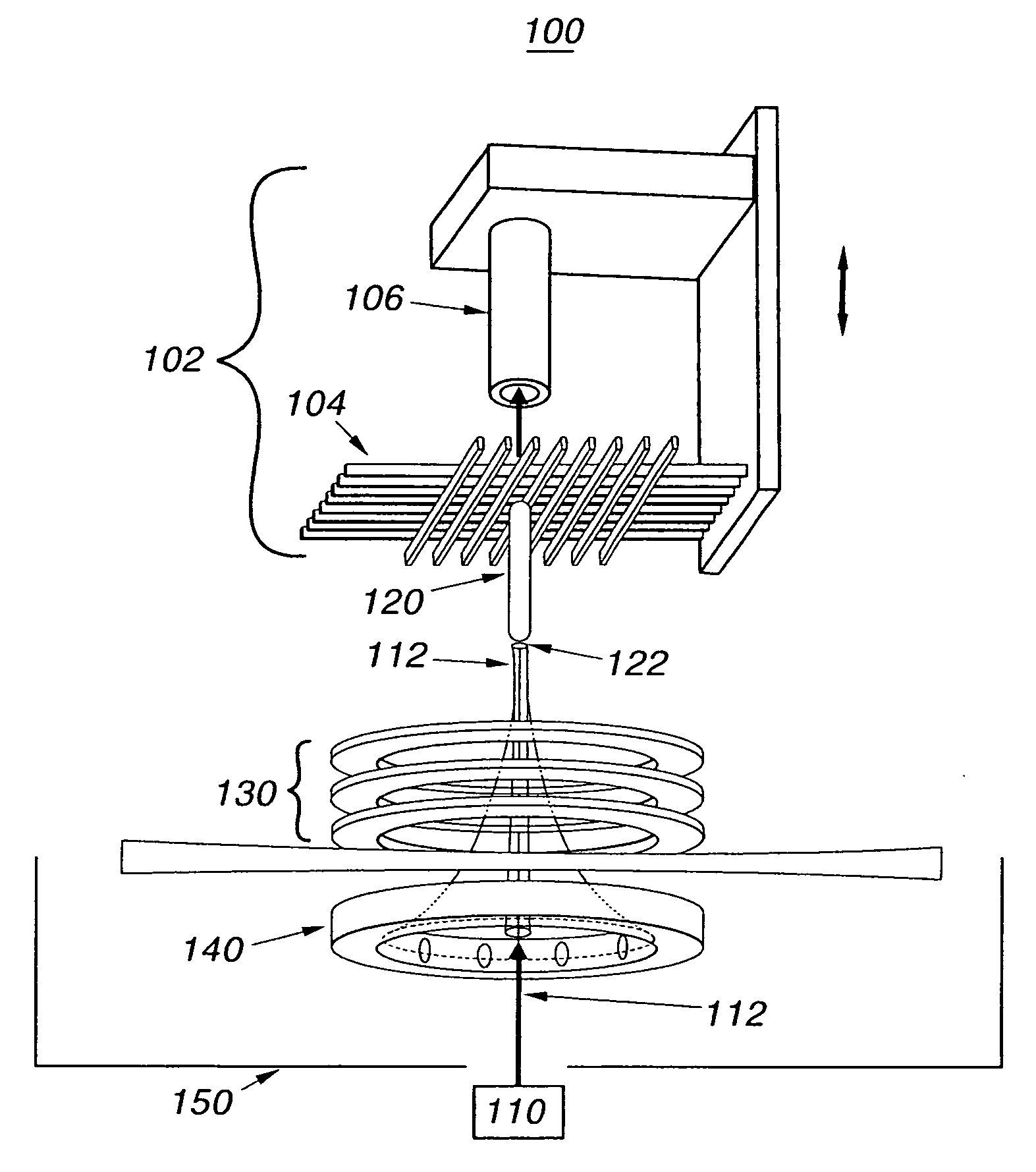Method and apparatus for field-emission high-pressure-discharge laser chemical vapor deposition of free-standing structures
a high-pressure discharge, free-standing technology, applied in chemical vapor deposition coating, metal material coating process, coating, etc., can solve the problems of difficult manual assembly of fibers into systems, inability to manipulate methods into useful structures, and inability to produce functional graded (fg) bulk production methods. to achieve the effect of enhancing the growth rate of free-standing structures
- Summary
- Abstract
- Description
- Claims
- Application Information
AI Technical Summary
Benefits of technology
Problems solved by technology
Method used
Image
Examples
Embodiment Construction
[0021] In the following description, like reference characters designate like or corresponding parts throughout the several views shown in the figures. It is also understood that terms such as “top,”“bottom,”“outward,”“inward,” and the like are words of convenience and are not to be construed as limiting terms. In addition, whenever a group is described as either comprising or consisting of at least one of a group of elements and combinations thereof, it is understood that the group may comprise or consist of any number of those elements, either individually or in combination with each other.
[0022] Referring to the drawings in general and to FIG. 1 in particular, it will be understood that the illustrations are for the purpose of describing a particular embodiment of the invention and are not intended to limit the invention thereto. Turning now to FIG. 1, an apparatus for preparing free-standing structures, as described herein, is shown. For the purposes of understanding the invent...
PUM
| Property | Measurement | Unit |
|---|---|---|
| pressure | aaaaa | aaaaa |
| pressure | aaaaa | aaaaa |
| pressures | aaaaa | aaaaa |
Abstract
Description
Claims
Application Information
 Login to View More
Login to View More - R&D
- Intellectual Property
- Life Sciences
- Materials
- Tech Scout
- Unparalleled Data Quality
- Higher Quality Content
- 60% Fewer Hallucinations
Browse by: Latest US Patents, China's latest patents, Technical Efficacy Thesaurus, Application Domain, Technology Topic, Popular Technical Reports.
© 2025 PatSnap. All rights reserved.Legal|Privacy policy|Modern Slavery Act Transparency Statement|Sitemap|About US| Contact US: help@patsnap.com



